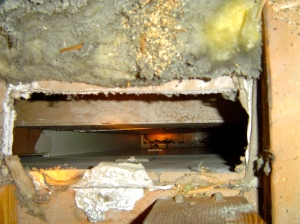Remember when President Obama said that “insulation is sexy” a while back? Well, I’m happy to report that he and Congress are pushing to make things happen in the world of energy conservation.
In case you haven’t heard, chances are good that Congress will pass a jobs bill with a new program called Home Star, sometimes called Cash for Caulkers. It’s a win-win-win program that could have a significant impact on jobs, home energy use (and comfort, healthfulness, & durability), and US energy security.
The program will have two levels: Gold Star and Silver Star. For Gold Star, a homeowner has to take a whole house approach to improvements by first having a thorough assessment done by a RESNET or BPI certified energy auditor. Once the auditor identifies the cost-effective improvements, a contractor comes in and does the work.
If the house achieves 20% in energy savings, the homeowner gets $3000 to help cover the costs of the improvements. For every 5% savings beyond that, there’s another $1000 coming, up to a maximum of $8000. The total amount the homeowner can receive is also tied to the improvement costs, with 50% being the magic number. In other words, to get the full $8000 back, a home has to achieve 45% energy savings with improvements that cost $16,000 or more.
The Silver Star level allows homeowners to qualify for $1000 to $1500 for smaller improvements, with a cap of $3000. The measures that qualify are:
- Air sealing
- Duct sealing, retrofit, or replacement
- Insulation in attics, walls, or floors
- Replacement of windows, doors, and various appliances with high efficiency models
Home Star is going to be an incredible opportunity for homeowners. The amounts available through this program can be combined with other rebates and tax incentives as well to bring the costs way, way down. There’s currently a $1500 tax credit for doing this kind of work on existing homes, and I’m not sure, but you may be able to get it along with the Home Star money. Also, some utilities have rebates. For example, Georgia Power gives homeowners up to $1900 back when they participate in the Home Performance with ENERGY STAR program.
If you’re a homeowner, make sure you know the details before hiring someone. I’m sure there will be a lot of scammers out there who will be very happy to take your money without delivering the goods. I’ll be posting more info about the program here in this blog as the details emerge.
If you’re a home energy rater or BPI building analyst–or you want to be one–get ready to ride the wave when it hits. Most of us are in this business because of our passion for energy conservation and the environment, and now we’re poised to see the kinds of things happening that we’ve long dreamed of.
If you need more training, there are plenty of opportunities for that. I teach a home energy rater course at Southface and am getting set up to offer the BPI building analyst and envelope professional training through Energy Vanguard. Contact me if you’d like more details.




